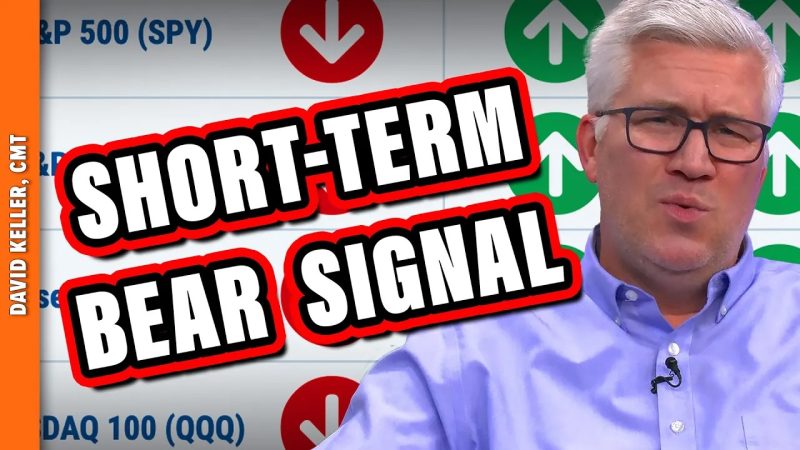Body:
Understanding Market Trends
To navigate through the fluctuating realm of financial markets, understanding market trends is crucial. Market trends can be classified as upward (bullish), downward (bearish), or sideways. Generally, an upward trend signifies a bullish market condition where the price of stocks, indices, or other traded assets increases steadily. On the other hand, a downward trend indicates a bearish market condition where these prices drop consistently over time.
Signal of a Short-Term Bearish Trend
Recently, market trend models have flashed signals indicating a short-term bearish trend for various traded assets. But what does this entail? The bearish signal implies a decrease in the market’s momentum, thus pushing asset prices down – an indication that sellers are overtaking buyers in the market. Factors that often contribute to this scenario include geopolitical instability, economic downturns, inflated interest rates, or even a significant worldwide event.
Implications for Investors
When a bearish trend is projected, investors and traders might be inclined to proceed with caution. This short-term bear condition could lead to a drop in value, hence the possible turbulence in financial portfolios. It could affect investment strategies as traditional buy-and-hold tactics might not be as profitable during this period. However, it’s also crucial to remember that market trends, whether short-term or long-term, are subject to changes shaped by multiple global factors.
Is the Bearish Trend Always Negative?
Despite seeming alarming, a bearish market isn’t necessarily a bad thing. In fact, it presents an opportunity for investors to leverage these trends. A bearish market is often seen as a ‘buying opportunity’ for investors who are looking at long term investment. During this period, bargain hunters can purchase valuable stocks at discounted rates and hold onto them until the market turns upward, presenting an excellent buying opportunity.
Additionally, bearish markets may also be beneficial for short-selling. Herein lies the essence of the age-old financial maxim, buy low, sell high. In this case, investors can sell borrowed assets that they believe are going to decrease in value. When the asset prices drop, the asset is bought back at a lower price and returned to the lender – the difference in price being the investor’s profit.
What’s Next?
However, predicting exact market behavior can be complex due to the myriad of factors at play. Economic indicators, such as employment rates, GDP, or inflation, can shift market sentiment, thus affecting trends. Likewise, unexpected global events or policy changes can also instantly alter the trajectory of the market.
From a practical standpoint, investors should do thorough research, stay informed about global and market events, and consider diversifying their portfolios to withstand potential market reverses. It’s also advisable for investors to consult financial advisors for personalized guidance tailored to their current situation and future investment goals. This holistic approach can help navigate the ebb and flow of market trends, and prepare for whatever may come next on the horizon.
In essence, while the market trend model flashing a short-term bearish trend might initially cause apprehension, it’s merely indicative of the market’s natural unpredictability. As investors, adopting a balanced and informed approach can turn these market fluctuations into beneficial opportunities.




